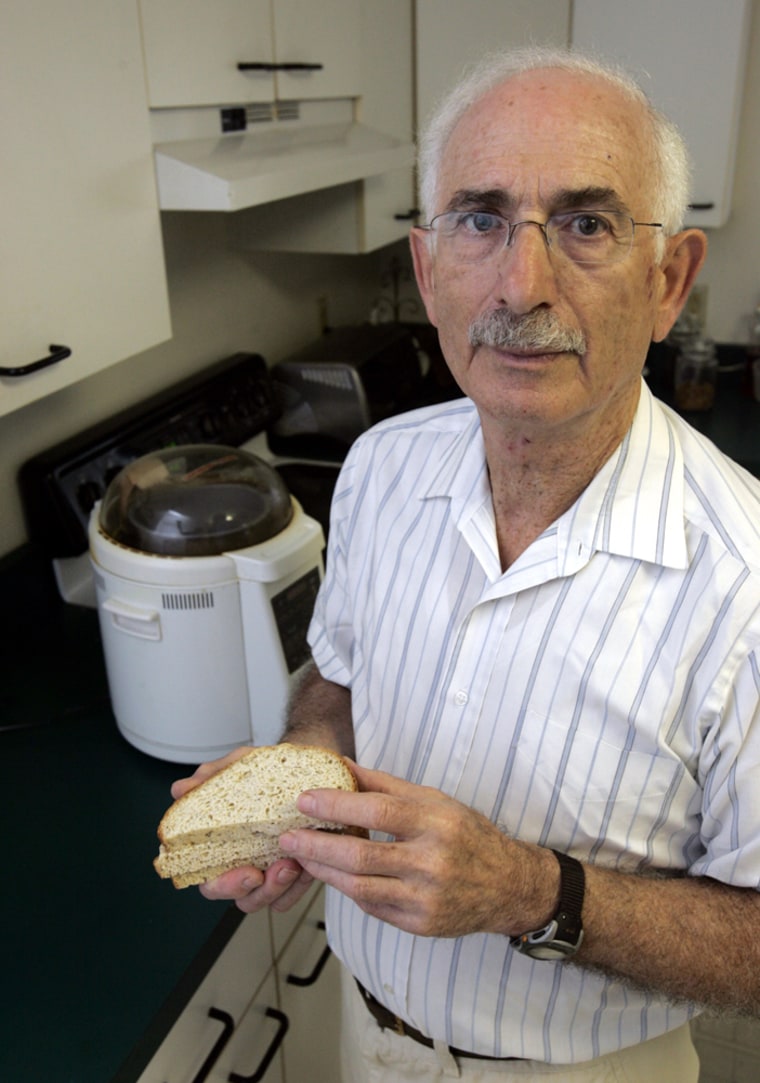For about 2 million Americans, the bread basket used to be filled with a tasteless, brick-like loaf that crumbled when sliced.
That was the bleak world of food Bernie Mansbach found 25 years ago when he was diagnosed with celiac disease, or an intolerance to a wheat protein called gluten.
"In those days, the doctor just stuck his head in the door and said, 'Don't eat gluten,'" said Mansbach, 74, of Scotia, N.Y. "There were very few commercial gluten-free foods available then."
Now manufacturers are rolling out gluten-free equivalents of everything from pizza crusts to doughnuts, buns and cakes. Once banished to the dusty bottom shelves of obscure grocers, the gluten-free revolution is surfacing in the aisles of major supermarkets.
At Wal-Mart, "gluten-free" products are hitting the shelves this month. The retailing giant is requiring suppliers to identify whenever gluten is used in its private-label products, said Bob Anderson, general merchandise manager of the company's Great Value brand.

So far, 982 of the company's 1,254 products have been identified as gluten-free.
What makes the market appetizing is that it's no flash in the pan. Celiac disease is an incurable, lifelong condition, said Pam Cureton, a clinical dietitian at the University of Maryland Center for Celiac Disease.
Gluten intolerance is believed to affect about one out of every 133 Americans and legions more are sensitive to gluten. Last year, the National Institutes of Health held its first conference on the condition, concluding the prevalence of celiac disease in the United States was much wider than previously believed.
Gluten damages the small intestine of people with celiac disease and causes symptoms that include severe cramping, diarrhea, chronic fatigue and malnutrition. Untreated celiac disease can be life-threatening and lead to organ disorders, according to the Celiac Center.
The only way to manage the condition is to banish gluten — a trickier feat than one might expect. Wheat, rye and barley are in products ranging from soy sauce to beer to modified food starch. Even the slightest trace can wreak havoc on the digestive system for weeks.
A bowl of spaghetti simply wasn't worth the consequence for Mansbach — but he also wasn't ready to resign himself to the dreary world of rice cakes.
Over the years, he started making his own bread, pizza and bagels. He sniffed out gluten-free products in obscure, out-of-the-way grocers and had a running list of where to score certain foods.
When he craved brownies, he could drive a half hour to a health food store. If he drove farther west, he could get his hands on that coveted commodity in the world of celiacs — gluten-free cereal. Mail-order food became routine; stashed in his freezer at any given time are a half-dozen loaves of bread from a Canadian company called Kinnickinick.
But these days, stores carry a range of gluten-free cookies, pastas and bread, using substitutes like rice flour, arrowroot, potato and tapioca.
"There are more products to buy than I would ever eat," Mansbach said.
The products are more expensive, though. A loaf of gluten-free bread, for example, costs $3.99 compared to 99 cents for a loaf of house brand wheat bread at Hannaford Supermarket in New York.
Hannaford, which operates 143 stores in New York, Vermont, New Hampshire and Maine, says it is expanding its gluten-free lineup this fall. Whole Foods Market lists more than 800 gluten-free items, up from about 250 seven years ago.
Wegmans supermarkets in New York has a "Celiac Recipe of the Week."
"We hear from (people with celiac) more than any other group, because it's such a life and death issue for them," said Jane Andrews, corporate nutritionist for Wegmans.
Still, Mansbach said many gluten-free products could be better.
"Some of the bread is still pretty bad," he said. "They try to make it just like the real thing, but it's never going to be exactly there. You just have to accept that."
